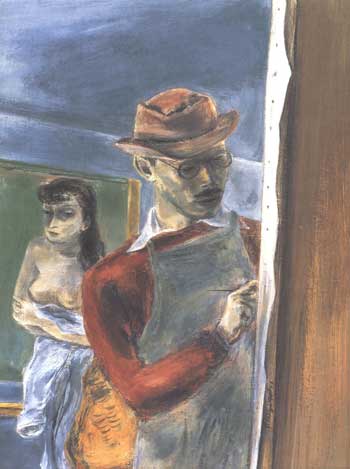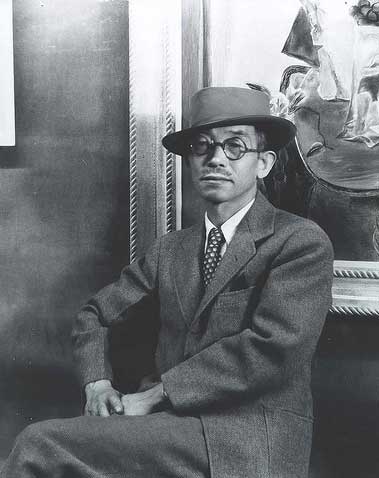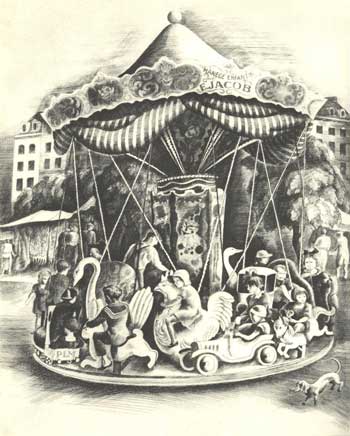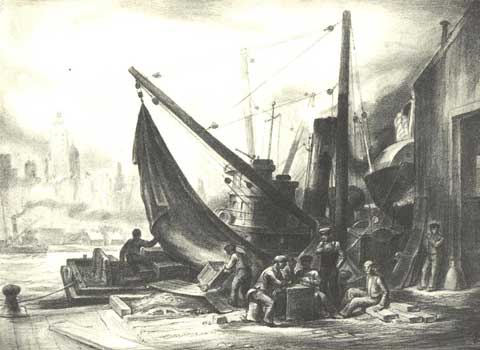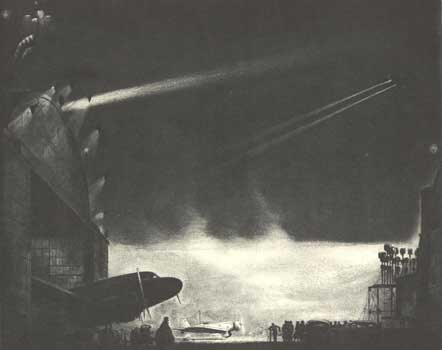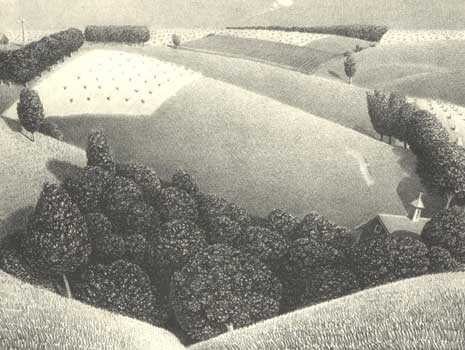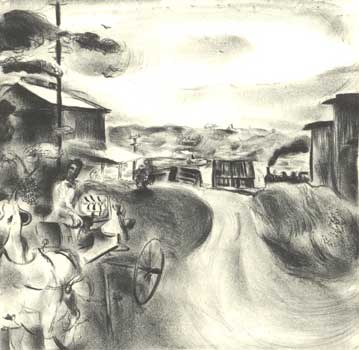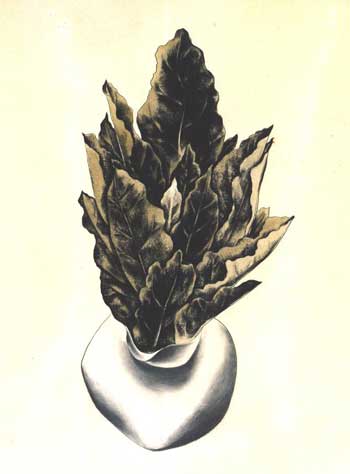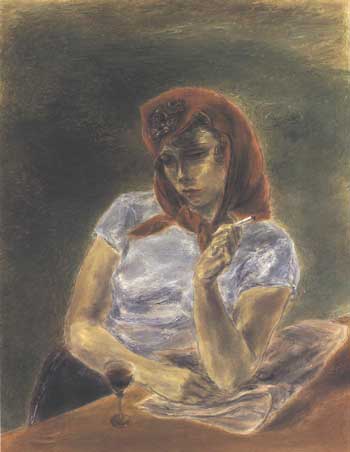1929年にパリから帰ってきてから、クニヨシの評判は着実に伸びて来ました。
ミュージアム・オブ・モダン・アート(ニュー・ヨーク近代美術館)が、色々と話題の
多かった、ナインティーン・リビング・アメリカンズ(19人の現存アメリカ画家)展
を1929年12月に開いた時、美術館の理事達の投票で選ばれたなかでクニヨシは
最も若い画家の一人でした。
彼の日本出身が、批評家達を悩ませ、彼がアメリカ人であるかどうか多くの議論がありました。
クニヨシは、これに憤慨し、いまでも嫌っています; 彼は最近こう言っています:
「私は、少年の頃からここで仕事をし生活をしている。 私の美術の訓練と教育は、
アメリカの大地とアメリカの学校からだ。 私の接し方、考え方は隣の人と丁度同じでアメリカ人だ。」

"La Toilette" 1928. Oil on Canvas, (36 x 30 inches), Fukutake Shoten Collection, Okayama.
From his return from Paris in 1929, Kuniyoshi's reputation grew steadily.
When the Museum of Modern Art in December 1929 staged its much-debated
exhibition of "Nineteen Living Americans," selected by vote of its trustees, he
was one of the youngest painters chosen. His Japanese birth bothered the critics
and there was much argument as to whether or not he was an American. Kuni-
yoshi resented this and still resents it; as he has lately said: "I have worked and
lived here since a boy. My art training and education have come from American
schools and American soil. I am just as much an American in my approach and
thinking as the next fellow."
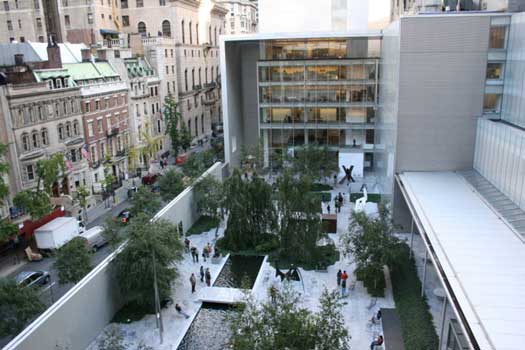
New York Museum of Modern Art = MoMA, Re-designed by Yoshio Taniguchi in 2004.
建築家の谷口吉生がデザインし、2004年11月20日にリオープンしたMoMAの内庭。
MoMA (Museum of Modern Art), ニュー・ヨーク近代美術館のアーカイブを見ると、
「現存アメリカ19人展」は、1929年12月13日からニュー・ヨーク近代美術館で
第2回目の展覧会として行われました。 初回は、セザンヌ、ゴーギャン、ゴッホ、そして
スーラ達の作品100点を集めたものでした。
19人の中には、クニヨシの先生や学友の名前もあります。 その他、エドワード・ホッパー、
ジョージア・オ’キーフのようにアメリカを代表するような作家もいました。
展覧会では各作家5点ずつの95点が展示されたようですが、クニヨシのどの作品が展示されたかは分かりませんでした。
19人の画家を選んだ40人前後のトラスティー達の中では、当然ですがミセス・ジョン・ディー・ロックフェラー、や ガーチュード・ウィットニーことミセス・ハリー・ペイン・ウイットニー、意外な名前は例のクニヨシを援助したチャールス・ダニエル、写真家でオ’キーフのハズバンドのアルフレッド・スティグレイツ、それに原爆のオッペンハイマーの名前がありました。
SECOND EXHIBITION OF THE MUSEUM OF MODERN ART
NINETEEN LIVING AMERICANS
OPENING DEDCEMBER 13TH, 1929
The first exhibition of the Museum of Modern Art, comprising
one hundred works by Cezanne, Gauguin, Van Gogh and Seurat came
to its close December 7th. Over 47,000 people came to the exhibition,
numbers increasing rather than diminishing as the four weeks passed.
The last day 5300 people crowded the Gallery. In addition to the
ordinary attendance of the day special groups of students from
Columbia, Barnard, New York University as well as numbers of artists,
came during the evenings.
The second exhibition of the Museum of Modern Art, open to
the public on Friday, December 13th, will be devoted to paintings
by Nineteen Living Americans. The invitation opening will be held
Thursday, December 12th.
The nineteen painters are:
Charles E. Burohfield
Charles Demuth
Preston Dickinson
Lyonel Feininger
Pop Hart
Edward Hopper
Bernard Karfiol
Rockwell Kent
Walt Kuhn
Yasuo Kuniyoshi
Ernest Lawson
John Marin
Kenneth Hayes Miller
Georgia O'Keeffe
Jules Pascin
John Sloan
Eugene Speicher
Maurice Sterne
Max Weber
The list was drawn up in the following manner. Lists of over
a hundred of the better known American painters were distributed
among the trustees of the Museum. Each trustee was asked to
check the fifteen painters whom he thought should be shown
in the first American exhibition adding the names of painters
not on the list. The resulting consensus was carefully studied
by an executive committee of three who made out the final list of
Nineteen. It is believed that these Nineteen painters represent
a fair cross section of the most mature artists of both conservative
and radical tendencies. The number was limited to twenty or less
because it seemed better to show at least five paintings b y each
man rather than one or two by a large number of painters. It was
of course necessary to omit in such a small group many artists
who are perhaps equal in quality to those chosen. The trustees
wish to emphasize the fact that future exhibitions will make it possible
to include many of the painters not shown in this exhibition.
Whenever possible the pictures themselves were chosen with the
cooperation of the painter.

"Pears, Grapes and Peaches" 1927, transfer lithograph printed in black, 16x12in
Collection of the Museum of Modern Art. Given anonymously.
